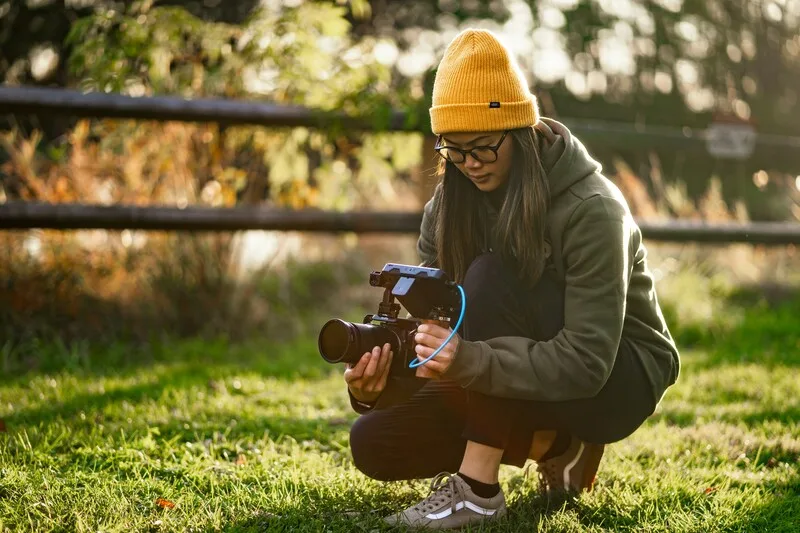Whether you’re a beginner or a seasoned videographer, simple and effective tips can forever improve your skills and every project you work on.
While technical knowledge is necessary—and you can’t be a great videographer without it—the other skills you’ll learn today are equally important.
In this article, you will learn:
- How to align your work with a project’s overarching story
- Ways to approach your craft with a purpose and an end goal in mind
- Why collaboration and communication are as vital as camera skills
These principles will help you better understand what you’re shooting, how to contribute to the overall project, and how to give and receive support from the director and the rest of the crew.
Developing these skills can transform you from a professional videographer who creates beautiful shots into a collaborator everyone wants to work with because you consistently add that extra touch to the project.
Let’s dive into the principles that will shape your journey as a videographer.
And, like many great journeys, this starts with a simple question.
Understand the Purpose
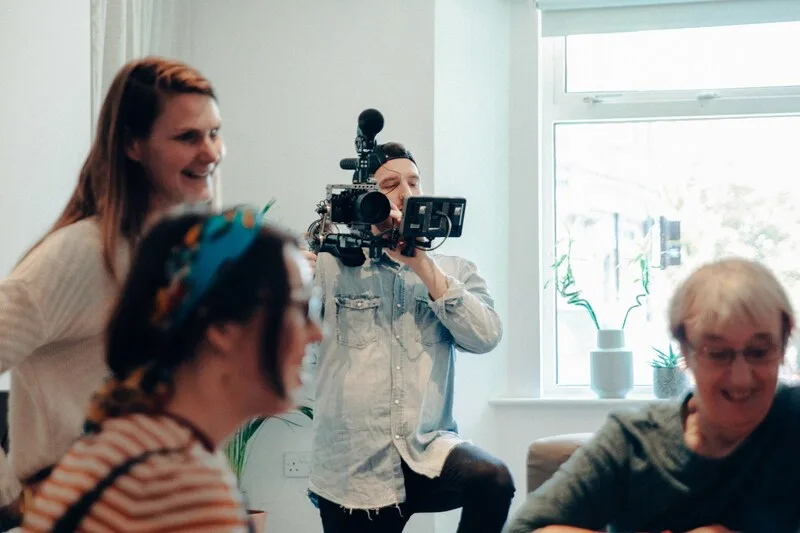
On more than one occasion, I’ve worked with videographers who barely glanced at the script or story and didn’t discuss the purpose of the video in depth.
On the surface, it was fine—they had a basic lighting setup, knew their camera well, and filled in the gaps.
The outcome was always above average. That was partly due to the additional explaining I did and partly to the successful improvisation. But those were also the videographers I would only work with again if production assigned them to me by default.
Why?
Like most film directors, I wanted videographers who aspired to go beyond average.
And, like most of them, I was willing to trade an unmotivated, seasoned videographer for a proactive semi-pro who gave their best.
If the videographer does the job, why care if they read the script thoroughly or invested extra time in understanding the story’s depth?
Because it affects every aspect of filmmaking—even technical ones.
What is the story about?
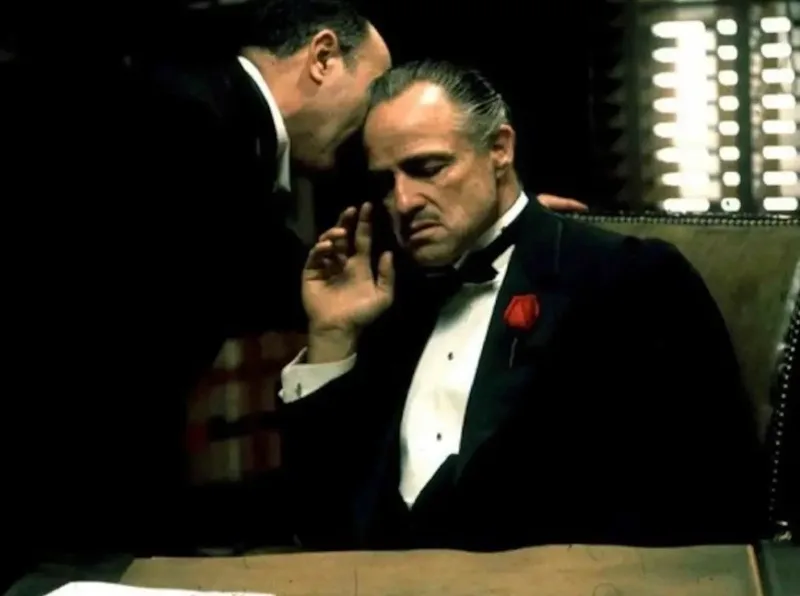
In The Godfather (1972), cinematographer Gordon Willis carefully used low-key lighting to emphasize the themes of power and corruption. The iconic scenes of Don Vito Corleone (Marlon Brando) in dim lighting reflect the dark, shadowy world of organized crime. This visual choice aligned perfectly with the story’s tone and deepened its impact.
A videographer who doesn’t care defaults to a one-size-fits-all setup.
That means average instead of potentially exceptional work.
“Oh, I’m not that ambitious yet,” you might say. “I’m just filming a simple story. How do I adjust my approach?”
The simple answer is: you don’t.
You act like a professional and back it up by giving your best effort to understand the story and bring it to life with visuals.
Connecting Shorter Forms to the Story
The Nike “You Can’t Stop Us” ad (2020) tells a story of perseverance and unity through seamless split-screen visuals. Each shot aligns with the brand’s narrative of overcoming challenges.
Whether you’re working on a funded short film, a music video for your friends, or a Facebook commercial for a local shop, the principles remain the same.
- What type of music do your friends play?
- Does the promo feature the owner, or is it narrated?
- Is it a slow pop tune, punk anthem, or indie garage jam?
While these examples may seem all over the place, there’s one common thread: story. It’s your mission to support that story with your visual craft.
Maximizing Creativity on a Budget
Does the music video have a background story, or will you just film the band in their backyard or garage?
In either case, how can you make it more interesting? What shots and equipment can you use to support it?
Is the owner of that small company the main character of the promo video?
Are they charismatic enough to carry the video, like the owner of the Dollar Shave Club, to create something shareable?
Or will they use a narrator, allowing you to add a more cinematic touch with short shots and edits in the style of Guy Ritchie?
Or are you going after a documentary style?
If this sounds too ambitious, remember that some of the most famous film directors started by filming zero-budget projects, using their knowledge to add extra value to the final result.
Start small to dream big
For example, Robert Rodriguez filmed El Mariachi (1992) as an indie project on a shoestring budget of $7,000. He used specific angles and shot types to suggest multiple cameras were used, even though he could barely afford one.
Steven Spielberg’s first major success, Duel (1971), was a TV movie also made on a modest budget. Spielberg relied on inventive camera angles and pacing to create suspense, setting the foundation for his future directing style.
With the information you have at this stage, you can effectively plan what gear you want to use.
Optimize Your Gear
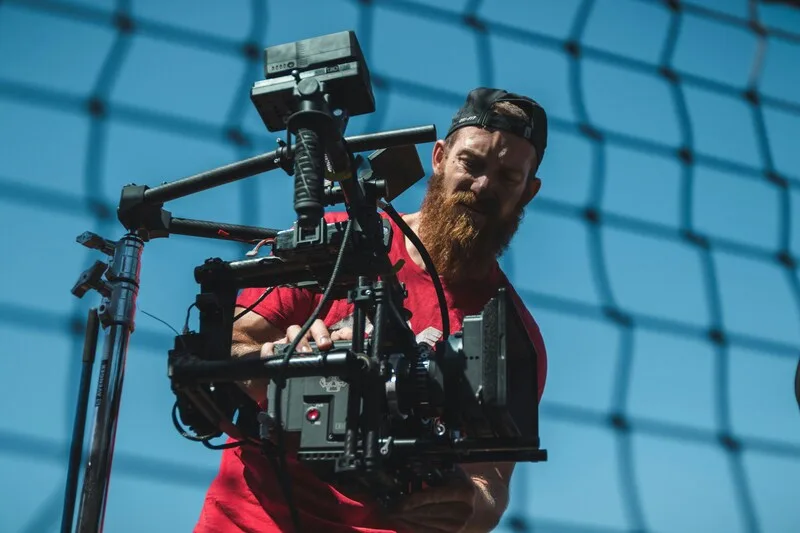
It’s not about filming in 16K; it’s about presenting the characters effectively.
Lighting, framing, and movement (or static shots) should support the story.
Connecting story and gear
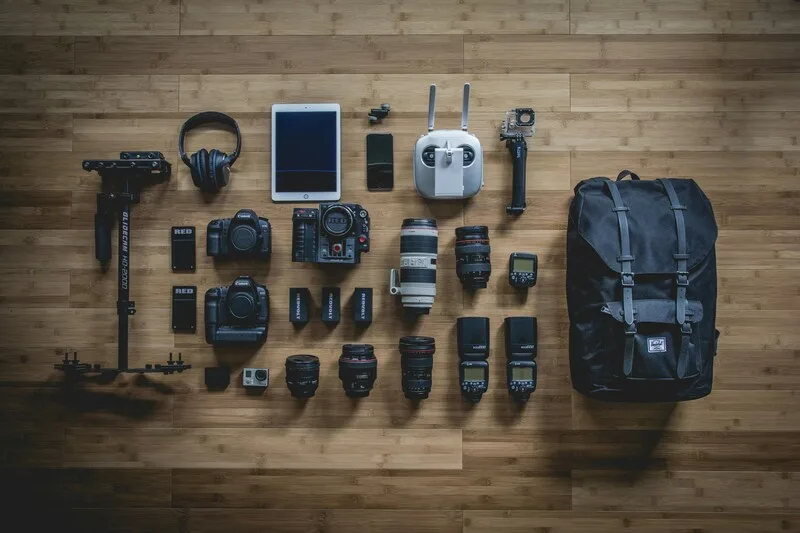
Resources wasted on unnecessary lighting can often be redirected to better cameras or renting a Steadicam, especially if that better serves the director’s vision.
Many directors struggle to communicate technical details clearly. Your proactive approach can bridge gaps and optimize resources.
The goal is to use your skills to support the story in the most effective way.
Create Techniques That Tell a Story
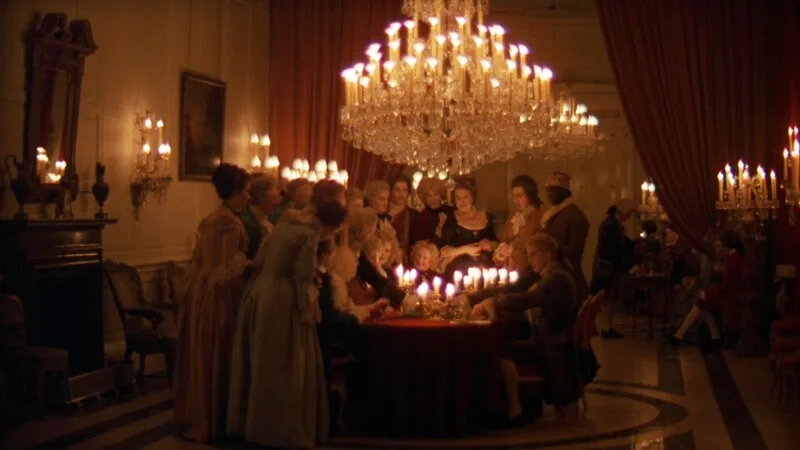
For example, in Barry Lyndon (1975), Stanley Kubrick and cinematographer John Alcott used lenses developed by NASA to shoot scenes lit entirely by candlelight. This technique resulted in a visual style closely resembling 18th-century paintings, adding to the film’s authentic period atmosphere.
In Citizen Kane (1941), director Orson Welles and cinematographer Gregg Toland used deep-focus cinematography to enhance storytelling. This technique ensured both foreground and background elements were in sharp focus, enriching the narrative depth.
At the time (and even today), it is considered to be an example of technical wonder, but the reason why it worked so well was that the framing and camera movement supported a story about an eccentric millionaire and magnate who actually nobody knew that well.
If you’re not sure where to start, just listen.
Listen and collaborate
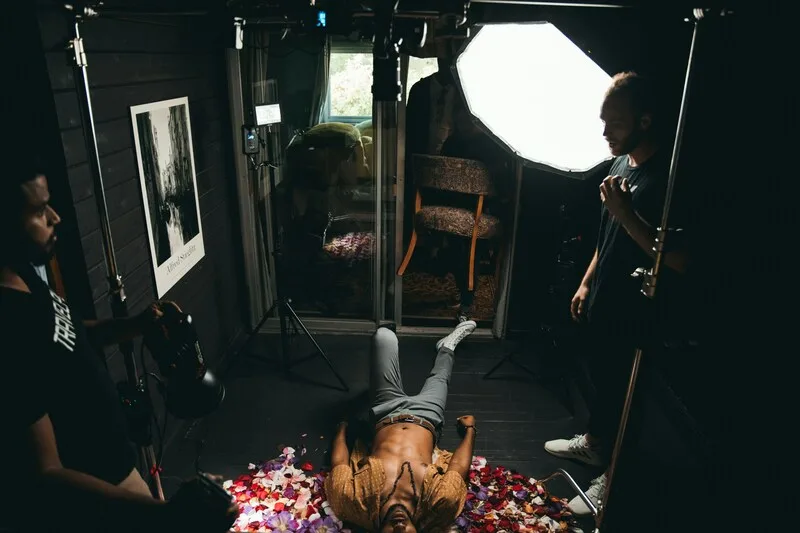
Once you’ve established the video’s topic, collaboration is key. Listening to the film director or client helps align your creative input with their vision, allowing you to plan strategically and tactically.
While strategic refers to the style and the general equipment you’ll use, tactical addresses day-to-day shooting solutions, plans, and schedules.
Strategic planning establishes the visual style and overall gear you’ll use.
Tactical planning addresses day-to-day shooting solutions, plans, and schedules.
Strategic planning
For example, if you’re filming a thriller with dialogue-heavy scenes, you might suggest using a Steadicam for walk-and-talk shots. Producers, however, may raise concerns (rightly so) about lighting setups for indoor scenes, which can require significant resources.
This discussion could lead to a win-win solution, such as using outdoor locations during golden hour to save time while enhancing the visuals.
It might sound idealistic, but it demonstrates how collaboration can generate better ideas than any department could come up with alone.
Can you see how you already determined technical parameters and optimized your resources?
For instance, in Children of Men (2006), Alfonso Cuarón’s dystopian thriller, intense battle sequences were shot with a Steadicam, creating a sense of chaos and immersion. The use of natural light added to the gritty realism of the film’s atmosphere.
You also want to prepare for each day, ideally a day in advance.
Tactical planning

Always check what you’ll be shooting tomorrow, especially if the director or producer has a lot on their plate.
Due to heavy rain predictions, will you shoot the dinner scene tomorrow?
Discuss the schedule with the producer and determine the time frame for light setup.
This will also be vital information for the director, who might appreciate the extra time spent fine-tuning the light to do extra rehearsals with actors.
This will also be important for actors. There is nothing worse than being prepared to deliver the lines and being in the zone only to find out it’s going to take an extra hour or two to finish the setup.
When it comes to the film crew, be especially attentive to the actors.
Support Actors and On-Set Crew

On set, videographers often treat actors as performers who are there to deliver. While professional actors are accustomed to giving their best, creating a comfortable environment can elevate their performances.
Be proactive
Avoid treating actors as objects. Instead, help them create great performances.
Here are some simple tips:
- Learn the names of the principal and supporting cast. (E.g., “John, could you stand there so we can fine-tune the lighting?” sounds better than, “Hey, stand there while we adjust the lights”)
- Use minimal instructions. Strict blocking shifts the actors’ focus from performance to technicalities (“I need to walk 10 centimeters from the doors each time I deliver the line”)
- Align with the director about explaining repeated takes. Actors need to know if you’re reshooting due to technical issues or performance adjustments
- Include actors in communication. Discuss useful information, like shot size, with the director to help actors prepare
- Handle sensitive scenes with care—a minimal crew and a professional atmosphere are key for scenes involving nudity or violence
In Blue Valentine (2010), director Derek Cianfrance ensured that the sensitive scenes between Ryan Gosling and Michelle Williams were shot with minimal crew and open communication. This approach allowed the actors to feel safe and deliver authentic performances.
The result was an authentic portrait of a relationship’s rise and fall, capturing raw emotions and nuanced performances.
Be a team player
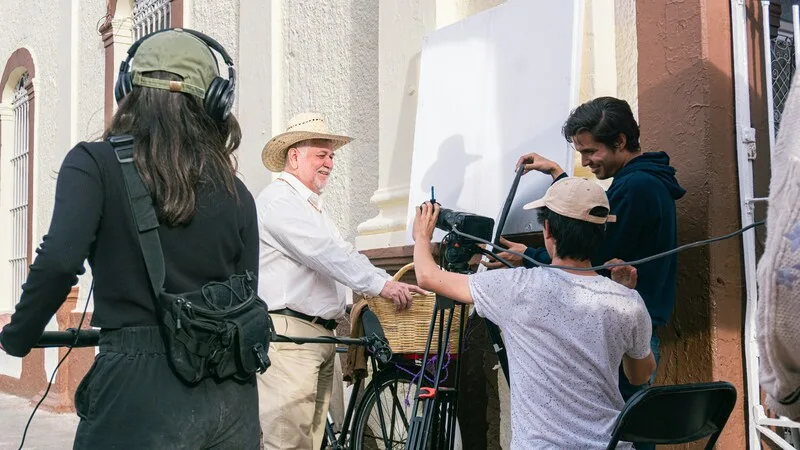
Mind the actors and help them give it their best.
Showing respect and being polite to other departments goes without saying.
It’s about striking that fine balance between clearly communicating what you need and being considerate of other departments and their roles.
Although many videographers’ involvement ends with the last shot, it’s great to be involved in post-production as well.
Collaborate with editor
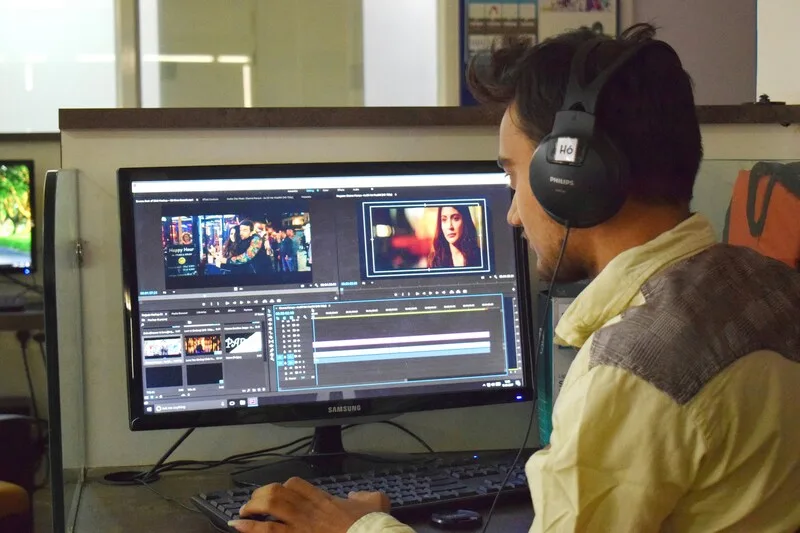
If this is a smaller project and you’re also acting as an editor, that goes without saying.
If you’re part of a professional crew, your expertise might be needed as an advisor in color grading, but if possible, you should also be part of post-production as an advisor.
Act as an advisor
Discussing your process and intention with shots, light, and colors, ideally with the director and editor at the same time, will help save time in the editing room.
Ideally, you’ll discuss that before shooting, which will help you and the director create tone and atmosphere and decide on the type of shots that will be used.
In Mad Max: Fury Road (2015), George Miller worked closely with cinematographer John Seale and editor Margaret Sixel to create the film’s high-energy, chaotic aesthetic. By planning and executing key scenes collaboratively, they ensured the story’s frenetic pace and visual coherence. The team even used color grading to differentiate time and mood, such as the warm tones of the desert versus the cold hues of nighttime sequences.
Create a creative triangle

As a film director, I found editors’ advice to be worth gold. With so many hours of footage they’ve seen, they often have great remarks about takes, framing, the type of shots, or even working with actors (if, after the seventh repetition, you get the same performance from actors, you probably need to adjust your input for actors).
Videographer – director – editore triangle can save much time in pre and post-production.
If this hasn’t been planned, be proactive and initiate this conversation. It will also make your life as a videographer easier.
Conclusion
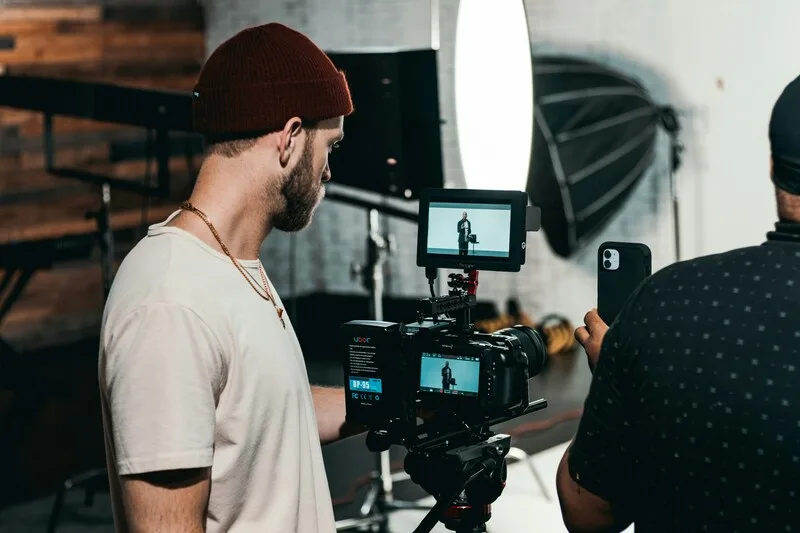
Being a great videographer goes beyond technical expertise. By understanding the story, collaborating effectively, optimizing resources, and supporting the team, you can elevate your craft to professional levels.
Start small with a personal project, applying these principles to explore storytelling and teamwork firsthand. From there, the possibilities for growth as a videographer are endless.
Being part of the team and creating creative solutions, seeing the film as a complete experience, not just the combination of shots, and being a team player can get you very far.
Use this opportunity to grow and develop your skillset to become a true director of photography.
And if you ever face hurdles on your journey, let our HayotFilms team know.
We’ll be more than glad to share our experience and help you along the way.

